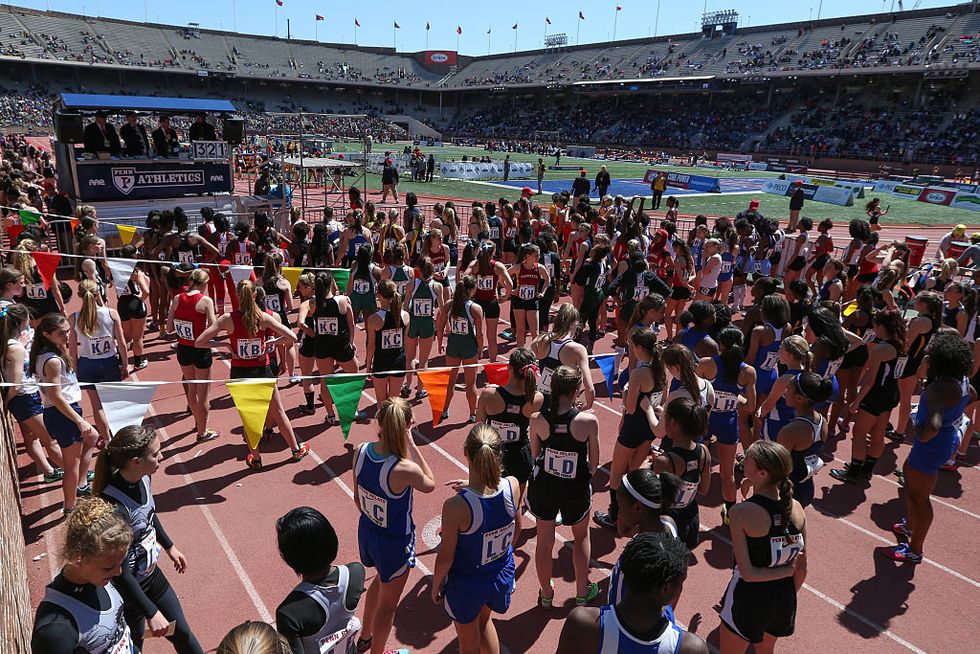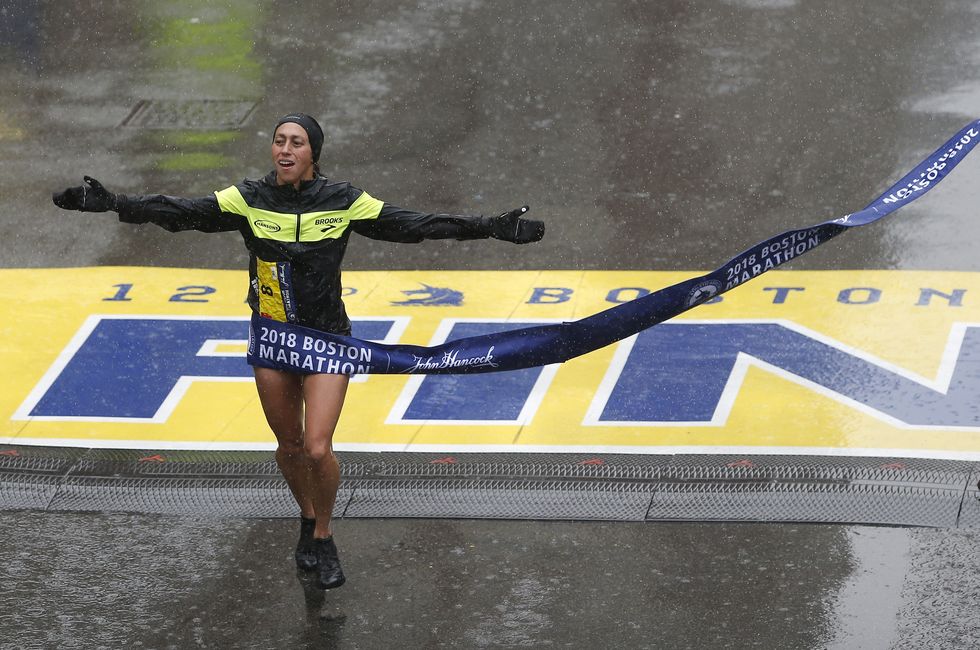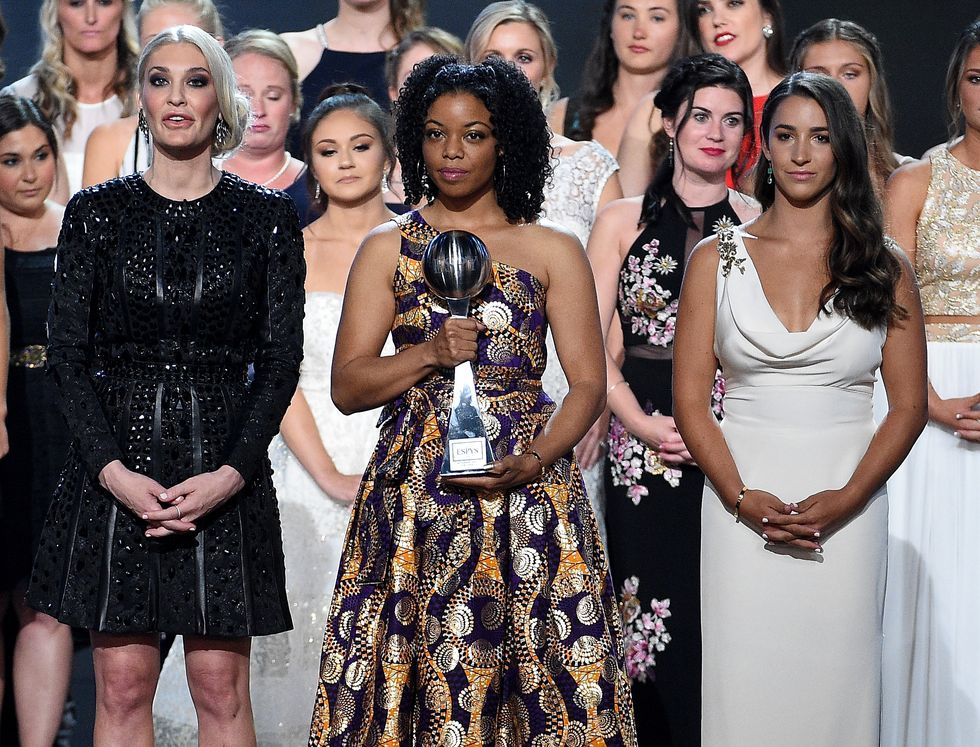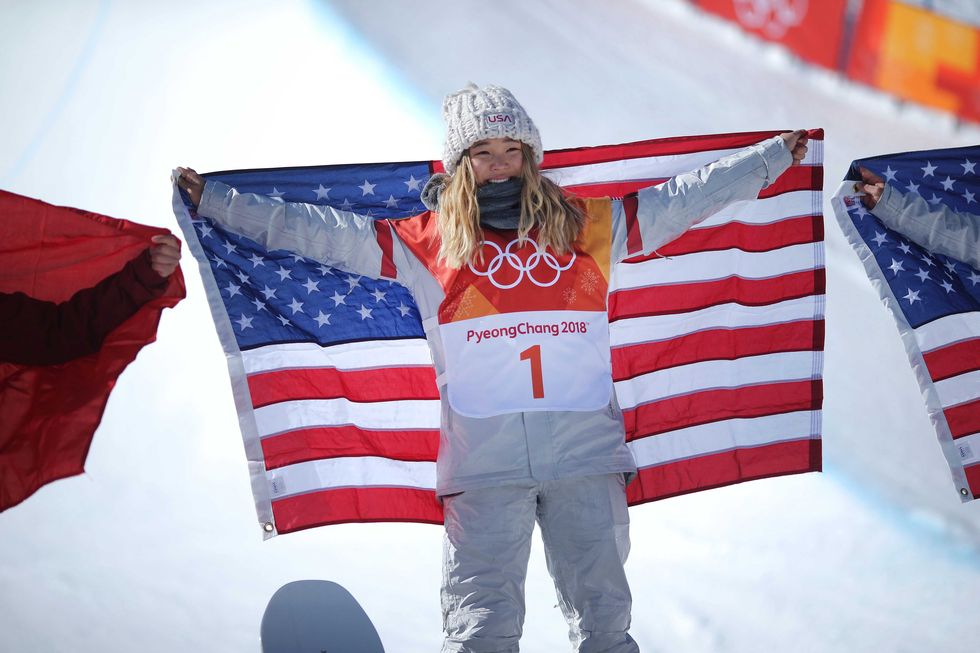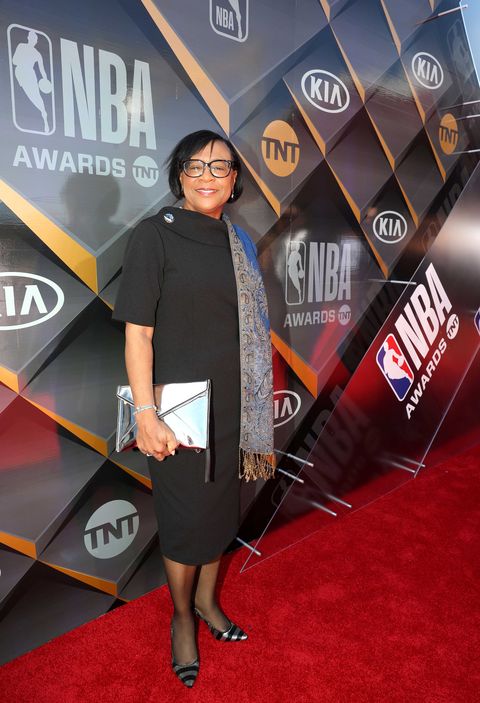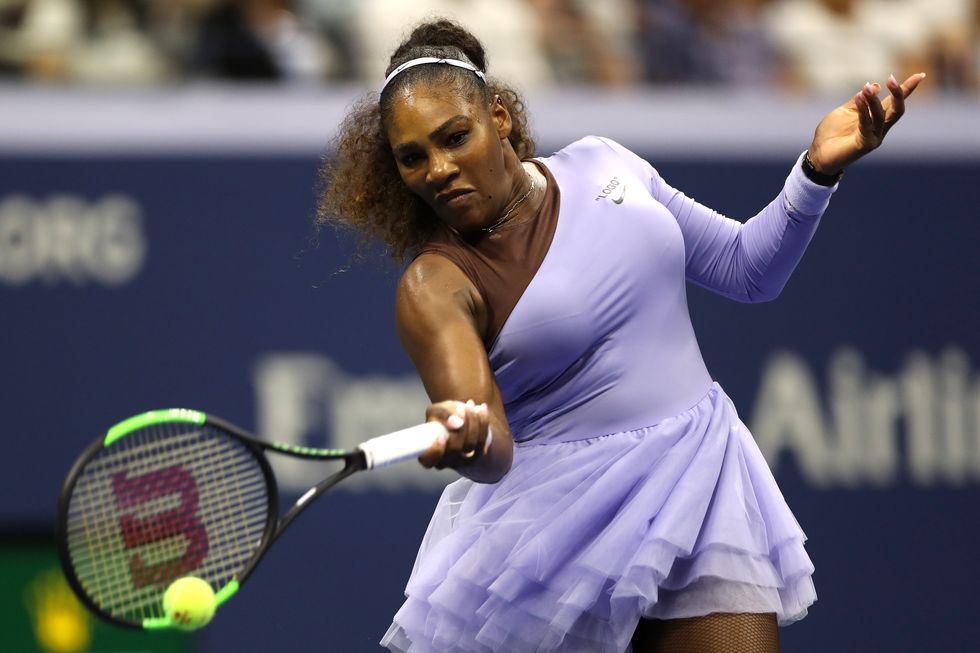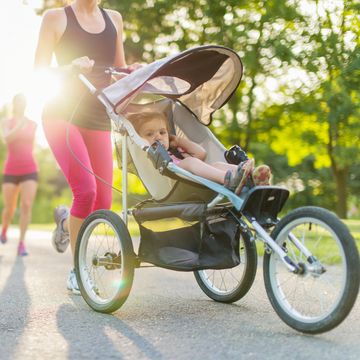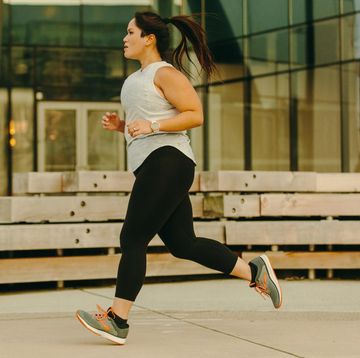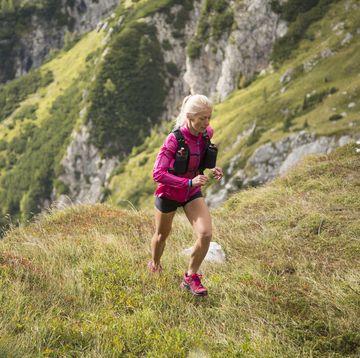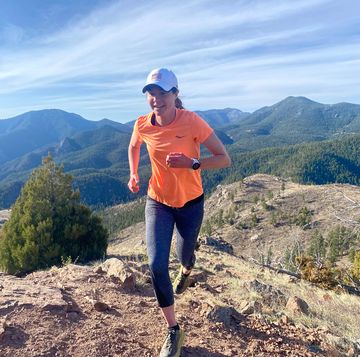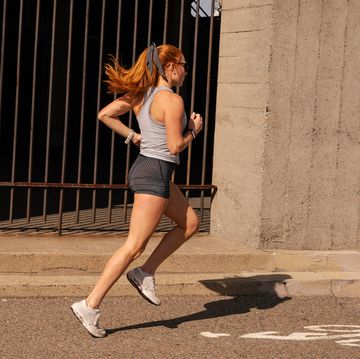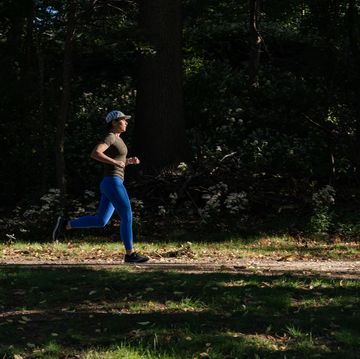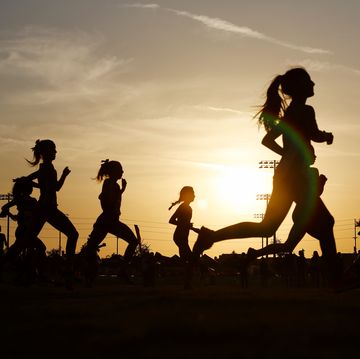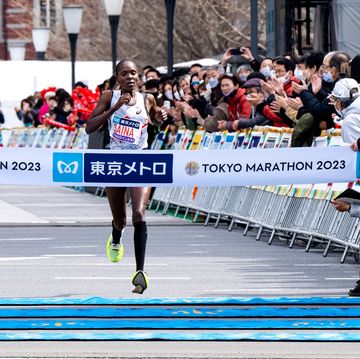There is no shortage of reasons why 2018 was, by most accounts, a challenging year for women.
As the #MeToo movement rolled on, headlines were dominated by powerful men accused of sexual harassment and assault such as Associate Justice of the Supreme Court of the United States Brett Kavanaugh, and the women who came forward with their stories of trauma, like Dr. Christine Blasey Ford. Women continued to fight for equal pay and against pregnancy discrimination. The president of the United States called a woman “Horseface,” to name just one of many gendered comments that risk being normalized. Whatever one’s politics or personal history, the atmosphere around gender feels, at best, tense. (Perhaps it’s not surprising that in November, Americans elected more than 100 women to Congress. This is the largest female class ever, and includes athletes Sharice Davids (D-Kan.), former Mixed Martial Arts fighter, and Kyrsten Sinema (D-Ariz.) who completed an Ironman triathlon in 2013).
To be sure, gender equity has a long way to go. But in the world of running, and the sporting world more broadly, there are some real reasons for cheering in 2018. At times these victories are at risk of being lost in rapid news cycles and social media, but they are moments that matter in a big way for women in and out of sports, a world that has for centuries been among the most noxious of boys' clubs.
Historically, there are fewer females than males participating in youth sports, but girls’ high school sports saw an additional 15,009 participants this year, according to a survey conducted by the National Federation of State High School Associations. Reaching an all time high of 3.4 million girls playing high school sports annually, which is closing the gap to the nearly 4.6 million boys who participate. (That’s a far cry from the 294,015 girls and close to 3.7 million boys in the 1971-1972 school year, just before Title IX was signed into law.) This year, outdoor track and field was the most popular high school sport in the country for girls overall; this means that running is leading the charge toward gender equality in sports.
Running delivered on the professional level, too. Desiree Linden stunned the country when she won the Boston Marathon, making her the first American woman to win that title since 1985—and in an epically stormy race, no less.
And as a symbol of their growing dominance, U.S. women finished incredibly at the New York City Marathon as well, with thirteen American women in the top 20 finishers, including a stunning performance by Shalane Flanagan for third place.
This past July, Shelby Houlihan set the American record in the 5,000 meters in 14:34.45, one of a slew of races she won this year with her incredible 400-meter kick.
South African middle-distance runner Caster Semenya is still battling for her rights, but she’s made it a lot farther than women in her predicament before: As a woman with hyperandrogenism (the endocrine disorder in which a woman’s body produces atypically high levels of male hormone—in Semenya’s case, three times the normal amount), she was at risk of being banned from competition in the name of fairness, like Indian Sprinter Dutee Chand. Although Chand was banned from running in 2014, the IAAF regulations were reworked and a revised version was put forth in April 2018, making it possible for Chand to participate again this year. Semenya and Chand continue to compete and fight for their rights, perhaps changing the outcomes for similar athletes in the future.
Of course, running wasn't the only sport that women excelled in. This year began with more than 150 women and girls confronting their abuser, former USA Gymnastics and Michigan State University sports doctor Larry Nassar, in what may be one of the worst scandals in sports history. (Lawyers for the survivors now say there are more than 500 women and girls who have come forward.)
One by one, survivors of Nassar’s abuse, including Olympians Jordyn Wieber and Aly Raisman, gave impact statements about the doctor who had been sexually assaulting athletes for more than 20 years. This bold confrontation is a rarity in sexual assault cases overall (even more rare was for such a proceeding to be public). Crimes that had been obscured for decades were now in the light, and multiple executives and coaches at Michigan State University, USA Gymnastics, and the United States Olympic Committee have since resigned or been ousted. And these women aren’t stopping with their own attacker: Many of “The Army of Survivors” are now forming a nonprofit that will, among other things, champion for more protections for young athletes. When Simone Biles won the U.S. all-around women’s gymnastics title in Boston this August for a fifth time, she did it in a light teal leotard, a tribute to her fellow Nassar survivors, and a further testament to her activism in improving the state of governance in her sport. And even as her governing body remained in turmoil, Biles led the American women to winning the team event at the World Gymnastics Championships in Doha, Qatar just a few months later. (Perhaps more incredible is that Biles was admitted to the hospital with a kidney stone the eve of the event and still had pain during the competition). If that isn’t focus, it’s hard to know what is.
At the 2018 Winter Olympics in PyeongChang,Korea, a record 1,242 female athletes competed. New sports categories that encouraged more female participation debuted, such as the rare co-ed mixed doubles curling. And the Games’ most decorated athlete was a woman: Norwegian female cross-country skier Marit Bjørgen made it onto the podium five times in PyeongChang, more than any other athlete. When Dutch long-track speed skater Ireen Wüst won her gold medal in the 1500 meters in PyeongChang, it was her fourth individual gold in for consecutive Games, the first time any Winter Olympian has achieved such a feat. She also became the first speed skater (male or female) to win ten Winter Olympic medals.
Americans cheered for 17-year-old Chloe Kim, who became the youngest woman to win an Olympic snowboarding medal when she snagged gold in the women’s halfpipe. Perhaps it shouldn’t be surprising that for the first time in Winter Games history, NBC broadcast more minutes of women’s events than men’s.
Also in the winter, a #MeToo scandal rocked the Dallas Mavericks’ front office when Sports Illustrated published an expose of a long time toxic front office culture riddled with sexual harassment. The good news is it resulted in the hiring of longtime AT&T executive Cynthia “Cynt” Marshall as the new CEO of the team, the first African-American woman to ever hold that position for an NBA team. At a press conference announcing her hiring, Marshall said she took the job “for the sisterhood.” In six months, Marshall has already promoted and hired several women to executive positions within the Mavericks organization.
Serena Williams made a dramatic comeback to tennis after giving birth to her daughter in September of last year. When her Women’s Tennis Association (WTA) ranking took a hit from her hiatus, she brought some much-needed attention to the maternity leave policies in the sport, specifically how they could impact a player’s standing upon returning. She also sparked conversations among WTA executives around how the organization may change rules around seedings when players return to competition
Also at the US Open this year was Williams’s controversial women’s final against Naomi Osaka, which brought attention to the officiating more than the play when Williams disputed some of umpire Carlos Ramos’s calls. That controversy created important dialogue about female athletes, displays of anger, and gender equity in officiating.
The U.S. women’s ice hockey team scored not only an Olympic gold medal against their longtime Canadian rivals, they successfully pushed to close the pay gap between them and the men’s team by taking on their governing body, USA Hockey, by threatening to boycott World Championships if they didn’t get improved pay, benefits, and traveling conditions. The threat worked and the players ultimately received a four-year deal.
It turns out that many media personnel covering these storylines were in their own #MeToo movement, breaking open longtime concerns about dated "locker room" culture. ESPN was among the many sports juggernauts that had to confront allegations of sexual harassment in its office by reviewing harassment policies and firing accused men like Donovan McNabb and Eric Davis. Nike’s Beaverton, Oregon, headquarters was also rocked when former employees filed a sex discrimination lawsuit against the company alleging that women were underpaid and subject to sexual harassment and gender bias.
Recently, Lisa Borders, president of the Women’s National Basketball Association (WNBA) announced she would be leaving the league for a new job: The first-ever president and CEO of Time’s Up Legal Defense Fund, the non-profit that helps get those who experience workplace sexual misconduct with legal assistance they need across a variety of industries. “It’s out here for everybody,” Borders told Vanity Fair. “I would just offer the invitation to everyone, right here, right now...come join us on this journey.”
The year was far from perfect. But it’s a start.

